Nowadays, artificial intelligence is helping Formula 1 engineers innovate faster than ever before. As part of this process, the key is using the computing power found in the cloud, because designing the performance of vehicles is particularly complicated, requiring the analysis and readiness for decisions made in a fraction of a second. This article will take you through everything from a behind the scenes perspective.
How do Formula 1 innovators use the AWS cloud?
Artificial intelligence is helping Formula 1 engineers innovate faster than ever before. As part of this process, the key is using the computing power found in the cloud, because designing the performance of vehicles is particularly complicated, requiring the analysis and readiness for decisions made in a fraction of a second. This article will take you through everything from a behind the scenes perspective.
Formula 1 is not only a constant battle between the best drivers in the world but also the innovators in the field. In terms of technology, no other sport is developing at such a dizzying pace. Formula 1 technology affects two main areas:
- Sports – thanks to this, drivers can reach speeds of 330 km / h, overcome PITstops (tire changes) in less than 2 seconds and drive corners with 5G overload.
- Fan experience – Formula 1 has almost half a billion fans globally. Because of this fan base, Amazon Web Services has become the main technological partner of Formula 1. The task of AWS is to improve user experiences and provide services in the field of machine learning.
Live data analytics and machine learning
Each Formula 1 car is equipped with roughly 120 different sensors that generate 1.1 million data points per second. All of which are sent directly to the engineers in the pits. In turn, they analyze the incoming data with historical data from the last 70 years. AWS stores this data on AWS S3. With this technology, engineers and fans can learn about predicted racing strategies or the potential outcome of an upcoming overtaking maneuver.
Sample data taken from the car is presented in the graphic below.
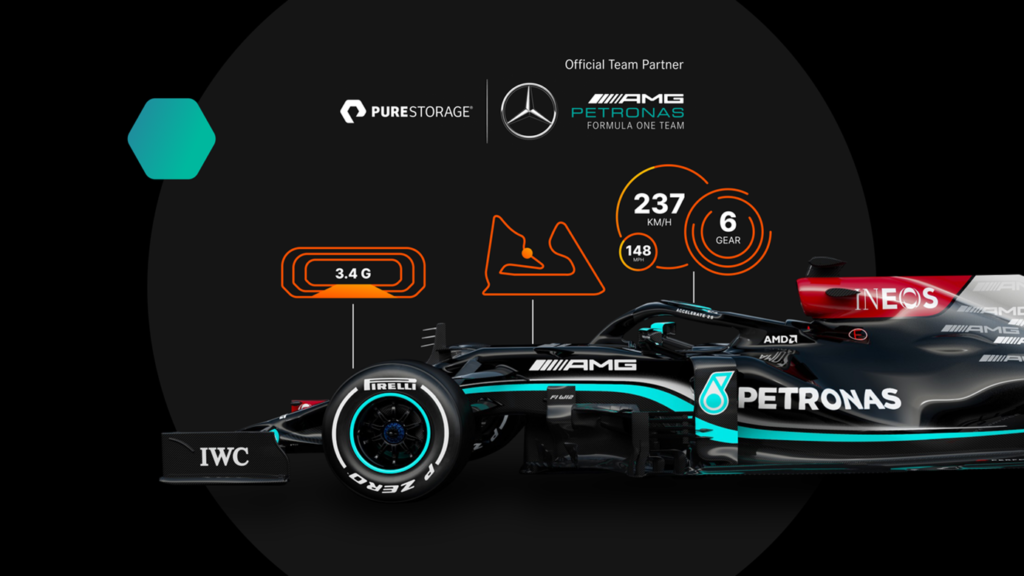
These huge amounts of data are transferred according to the following scheme using AWS Machine Learning.
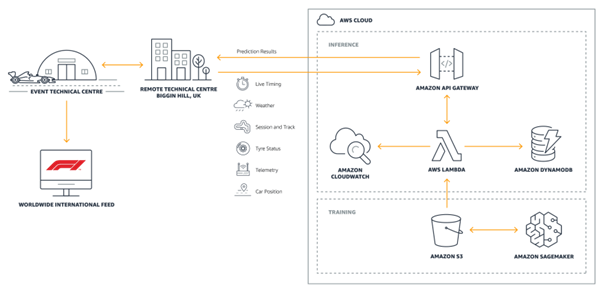
Data-driven race strategy
In addition to AWS Machine Learning, AWS SageMaker is also used in Formula 1. It is used for 3 purposes:
- Determine the racing strategy.
- Analysis of rivals.
- Vehicle performance tests.
Let’s take a brief look at each of them.
Racing Strategy
During each and every race, tons of exciting and nerve racking situations take place on the track. The most common being overtaking and PITstops, i.e. tire changes. Based on historical data and the current pace of the driver, it is possible to determine when overtaking will occur and how difficult it will be for a given driver to pull off the maneuver.
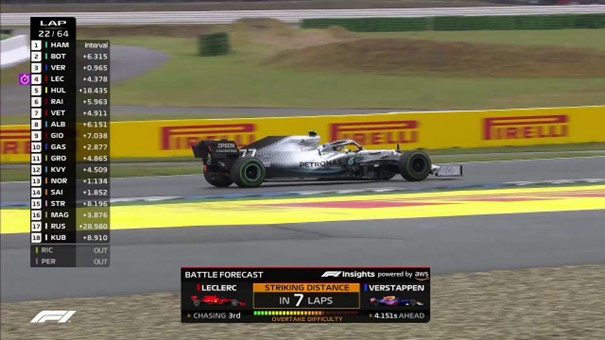
In the racing strategy, various possible scenarios are taken into account. One of the most common maneuvers to overtake a rival on the track is the so-called undercut. This consists of pitting for fresh tyres a lap ahead of the rival and working out enough advantage on the exit lap to go ahead of him. Fractions of a second are crucial because this maneuver can only be carried out if the rival’s advantage is less than about 2 seconds. The data allows us to decide whether a given player really has a chance to perform such a task successfully.
The graphic shows the expected chance of undercutting.
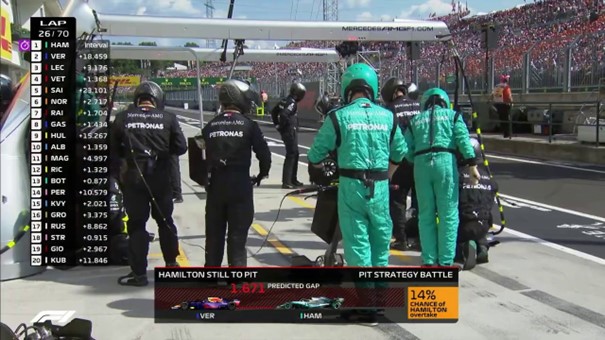
Analysis of rivals
During races, you can analyze your rivals from every possible angle. You can look at their development during the season or isolate a single driver in order to extract relevant data – e.g. braking distance analysis, analysis of accelerations in corners or times in mini-sectors.
The graphic below shows an analysis of the braking distance based on data from the cloud.
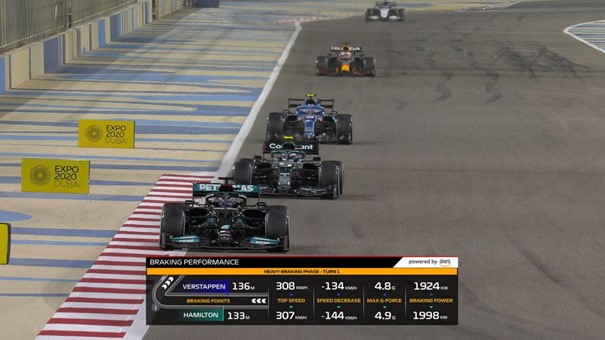
Vehicle performance test
The math and physics behind some graphics can be complicated for the average person to understand, so fast data processing in the cloud allows this to be simplified. For example, the “Car Performance Scores” graphics show how the cars perform in corners at high, medium and low speed, which is the fastest on the straights, or which cars are oversteered or understeered.
Telemetry data from the cars are used to determine individual results. On their basis, it is determined how much time the driver spends in each of the sections of the track, which include slow, medium and fast corners, as well as straights. This allows both the performance of the driver and the car in these sections to be determined. And the viewer is presented with a simple result on a scale from 1 to 10.
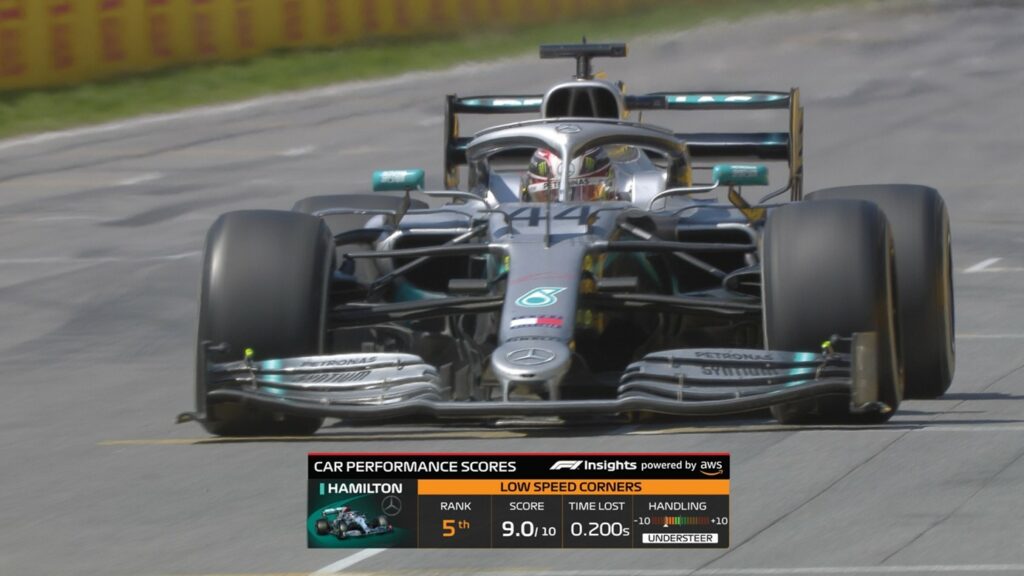
F1 Insights by AWS – summary
Without the ability to analyze data in the cloud and technological development, Formula 1 would certainly not be the same sport that it is today. The F1 Insights by AWS project gives fans the chance to have a new experience and get to know the discipline more deeply.
Currently, the Amazon ML Solutions Lab team, in cooperation with F1 representatives, are prototyping new models and solutions that aim to further accelerate the development of racing. In turn, the ProServ team helps to put these concepts into practice. In both cases, the ability to make decisions based on big data plays a key role.